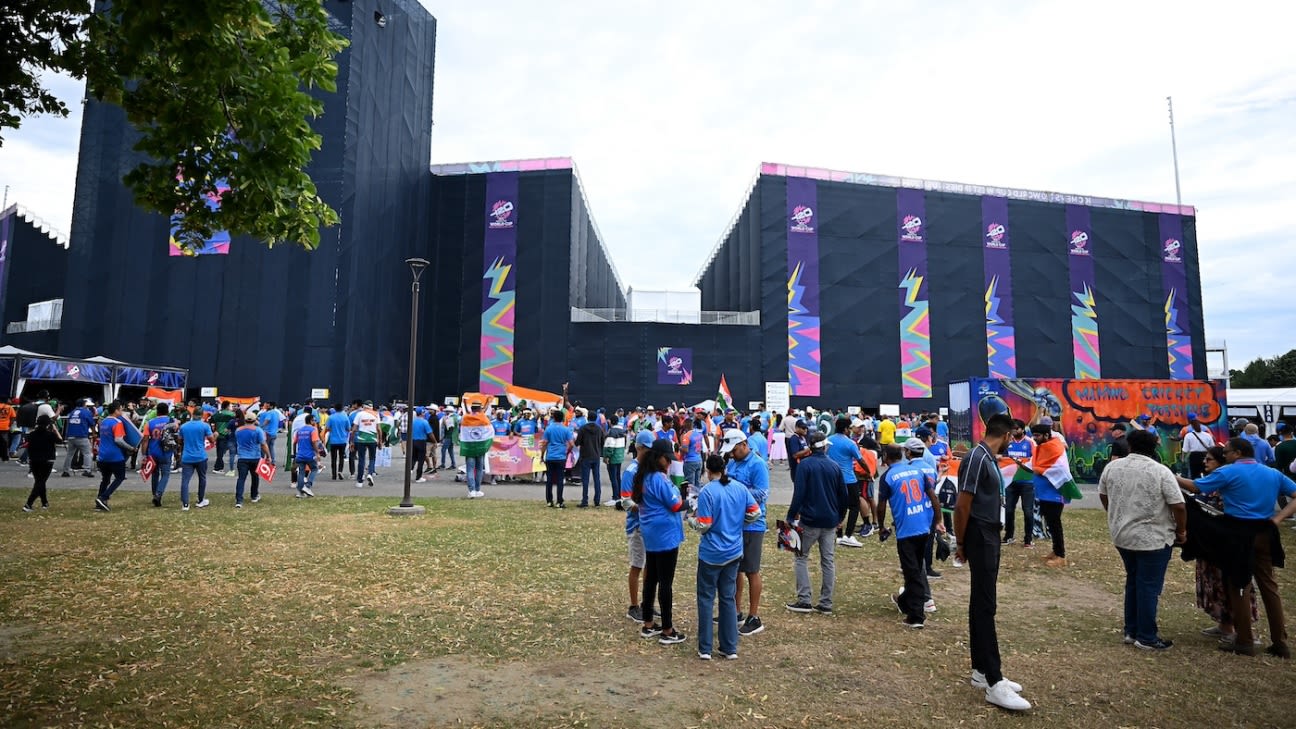ICC Board seeks answers after costs spiral for US leg of T20 World Cup
Written by I Dig Sports
No sooner had India beaten USA on June 12 in the 2024 T20 World Cup at the Nassau County International stadium in New York than cricket's first fully modular stadium was being brought down, packed and folded up. Cranes were at the venue before both teams had left, to remove the four drop-in pitches, with workers ready to dismantle the stands, to be returned to Las Vegas Formula One, from where most of the infrastructure had been borrowed by ICC.
According to one board director, the ICC Board had initially approved a budget in the range of USD $40-50 million for the USA leg of the tournament. Though ESPNcricinfo has not been able to independently verify that amount, the director said in that initial estimate, USD $15 million was meant for operational expenses and roughly USD $30 million for the construction of the temporary stadium outside New York City.
However, on the eve of the World Cup, T20 World Cup USA Inc, the US-based entity created by the ICC's commercial arm IBC (ICC Business Corporation) to run the US leg, sent in a request for an additional USD $20 million. This "outraged and alarmed" a number of board directors, according to a second director, not least the fact that the request was made at the last minute. Why, the director asked, were no red flags raised with the board at any stage before the request?
According to one official who was involved in the organising and running of the tournament, however, the $20 million T20 World Cup USA Inc sought was not additional budget, but to support cash flow: "T20 Inc had to pay people and needed a cash injection as a loan."
Several directors expressed reservations about the inflated expenditure leading to the request for the loan, among them CWI President Dr Kishore Shallow, ICC deputy chairman Imran Khwaja and Pankaj Khimji who is one of the three Associate directors on ICC Board. Other heads of Full Member boards also had their concerns. Khimji is believed to have sent an email last week to the ICC calling for an investigation into the US leg.
The original plan was for both a CWI-appointed LOC and T20 World Cup USA Inc. to work together, but more than one official involved in operations said that "all communication had broken down" between the two as the tournament progressed.
The questioning is not going to be restricted to the US leg alone. Some directors on the ICC Board are expected to highlight the hits to the image of the tournament because of the questionable quality of pitches at some venues, as well as empty stands during the Caribbean leg. Despite the surfaces having been kept fresh, the slow and uneven nature of the pitches as well as the outfield raised immediate questions about whether they were conducive to T20 cricket.
One person who has played a key role at all ICC events over the past two decades is Andy Atkinson, the global body's pitch consultant, who usually visits the shortlisted venues months in advance to ensure the quality of the surfaces and outfield. Atkinson, it is learned, was not to be seen during this World Cup, raising concerns as to who exactly was in charge.
Another issue was the swathes of empty seats around the grounds in the Caribbean starting with the tournament opener at Providence stadium in Guyana where West Indies played Papua New Guinea, watched by sparse crowds. That game was a day match, the timings of which were mainly responsible for the low turnouts across the Caribbean leg.
Day matches were arranged with the Indian broadcast market in mind, with the broadcaster keen to beam the games - especially those involving India along with both semi-finals and the final - at prime time in India: 8pm in India meant 10.30am starts in the Caribbean. While that was a clear deterrent, officials point out CWI had the largest marketing budget of any T20 World Cup to promote the event in the Caribbean alone.
It is customary for the ICC Board to review each global tournament, but in this case, there is a sense that questions need to be answered and accountability to be apportioned. As such, all eyes will be on CWI, as the main hosts of the tournament, as well as senior ICC management.
In 2021, when the ICC finalised USA as tournament co-hosts along with West Indies, the plan was to exploit the untapped market in America which has a young and growing diaspora from the subcontinent. With the International Olympic Committee including cricket as part of the 2028 Olympics in Los Angeles, the US leg was, in theory, a dress rehearsal.
On that front, more than one director said the ICC had been successful in achieving some "mileage". But questions around the marketing spend on the US leg are justified. A key indicator of its success will hinge on whether the game broke through beyond an already captive audience of subcontinent origin.
Most of the answers will likely come during the October round of ICC's quarterly meetings when the audited accounts for the World Cup will be ready for the ICC Board to refer to.
Additional reporting by Osman Samiuddin
Nagraj Gollapudi is news editor at ESPNcricinfo















 Phone: (800) 737. 6040
Phone: (800) 737. 6040 Fax: (800) 825 5558
Fax: (800) 825 5558 Website:
Website:  Email:
Email: 






